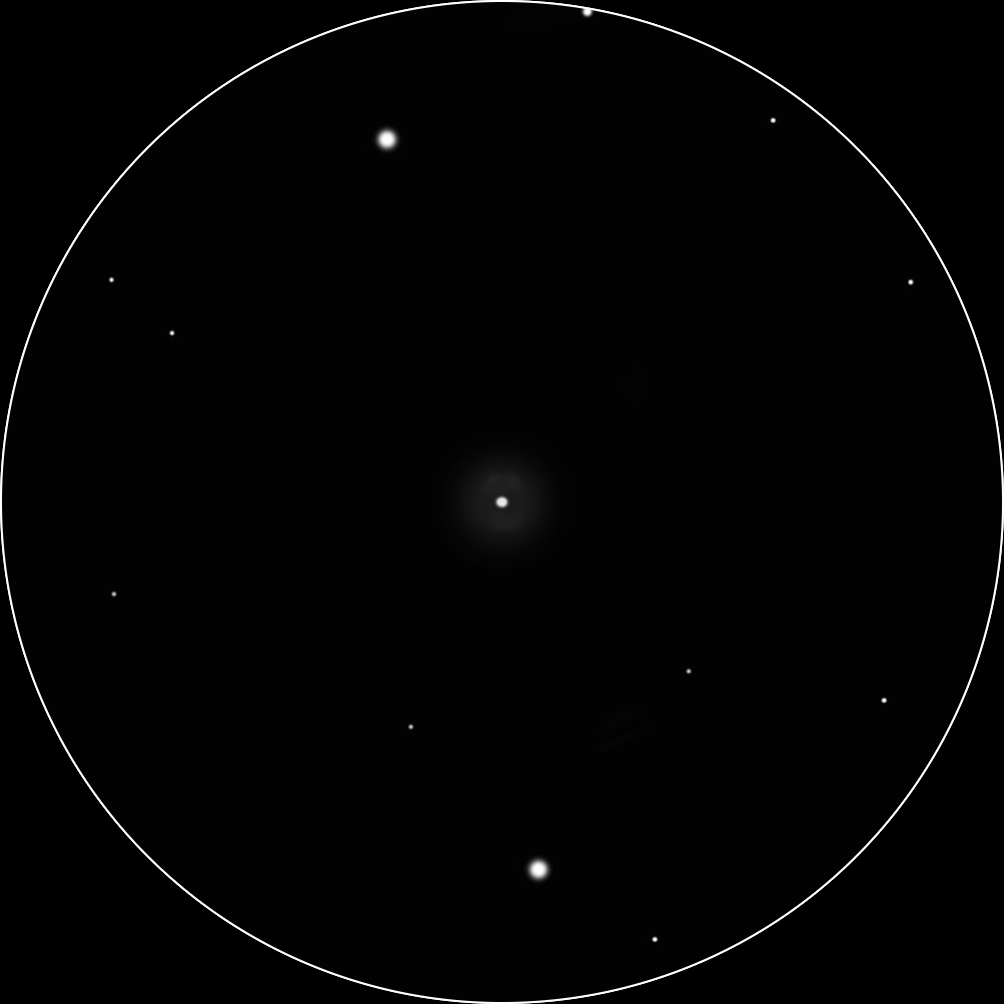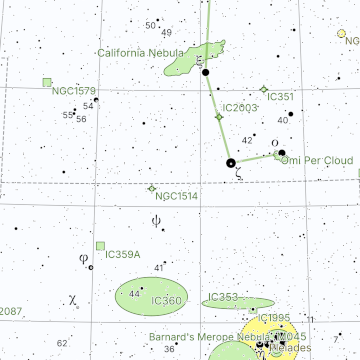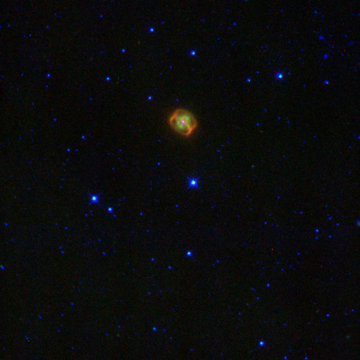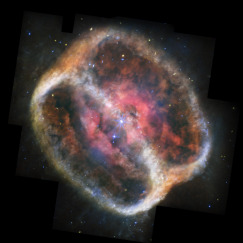Mike's Mathom Collection - NGC 1514
NGC 1514
November 13, 1790. A most singular phænomenon! A star of
about the 8th magnitude, with a faint luminous atmosphere, of a
circular form, and of about 3′ in diameter. The star is perfectly
in the center, and the atmosphere is so diluted, faint, and equal
throughout, that there can be no surmise of its consisting of stars;
nor can there be a doubt of the evident connection between the
atmosphere and the star.
— William Herschel, On Nebulous Stars, Properly So Called, 1791

modified to my field of view
I first encountered the planetary nebula NGC 1514 while camping in the Anza-Borrego Desert around New Years 2000, possibly the night of January 1. (Yes, we were avoiding the Y2K apocalypse; definitely not earlier than December 28 due to the moon, and no later than the 1st due to driving home on the 2nd.) I had been looking at the California Nebula in the constellation Taurus with my 10′′ Dobsonian telescope, then I decided to just start randomly scanning the sky nearby. Into my field of view popped three nearly equally bright stars in a not-quite-straight line, but the middle star had a fuzzy halo around it, something like the very fine drawing by Richard Orr at right. At first I thought I was just tired, or maybe that the optics were fogging, but the outer stars were sharp points, and nothing changed as I moved them around the field, so the fuzzy middle spot was definitely something real.

Later I went back to my star charts and found that I had serendipitously “discovered” NGC 1514, a planetary nebula that was originally discovered by Sir William Herschel in November 1790. This nebula has the distinction of convincing Herschel in his 1791 paper (pp 82-83) that there could be “shining fluids” in space. Until then, astronomers believed that the fuzzy wisps they had been seeing were likely just clusters of faint stars that would eventually be resolved into individual stars when observed with bigger and better telescopes; this had been the case for many previously observed nebulae like open clusters, globular clusters, and galaxies. NGC 1514 gave the first convincing proof that truly gaseous nebulae (as we understand them now) existed. So a neat chance find, but nothing to hint at what was to come.

(Recreated from source data)
On March 18, 2010, while sifting through some early WISE data looking for potentially pretty pictures, I decided to look up NGC 1514 just to see what it was like in the infrared. I was shocked; it looked nothing like I had expected (right).
What I expected was something like we see in another planetary nebula M97 (below): round at visible wavelengths, round at infrared wavelengths, maybe with a bit of extra glow from dust that gives it the red color in the center. In NGC 1514, we see the basic visible nebula duplicated in the infrared in the greenish color, but the orange-red rings are a completely new surprise since there is no evidence of their presence in the visible wavelength images. After a flurry of emails with some of the other WISE science team members and the PI, I wrote up a little paper in the Astronomical Journal and JPL ran a press release (screen grab, just in case).

Many news and science blog sites picked up the story. Phil Plait had a very well done writeup in the Bad Astronomy Newsletter/Blog (dead original link, screen grab), but my absolute favorite is a blog entry at the Monterey Bay Aquarium (dead original link, screen grab). That one is really worth the read.

CSA/STScI, modified
Fast forward 13 years. Of course, I had to observe NGC 1514 with MIRI, so on September 27, 2023, JWST was pointed at it and my observing plan was executed (ID #1238). It took me a little while, but a new paper was published in the Astronomical Journal and the main image was released on April 15, 2025 (Tax Day!) by the Space Telescope Science Institute (who operate JWST along with the Hubble Space Telescope and others).
Again there was lots of interest amongst the news and science blogs sites. Phil Plait picked it up again, as did an Ars Technica opinion piece to address whether JWST was worth all the expense; they concluded “Yes!” but I shudder to think that my little nebula picture was the basis for that post. I haven't yet found any that were quite so poetic as the 2010 Monterey Bay Aquarium piece; however, I suppose that even one such tribute is more than one can rightly expect in a career.
 |
Graphics files (JPEG or PNG), unless otherwise credited. If you would like to use something, just ask! |
 |
All other files (.html, .pdf, etc.) |